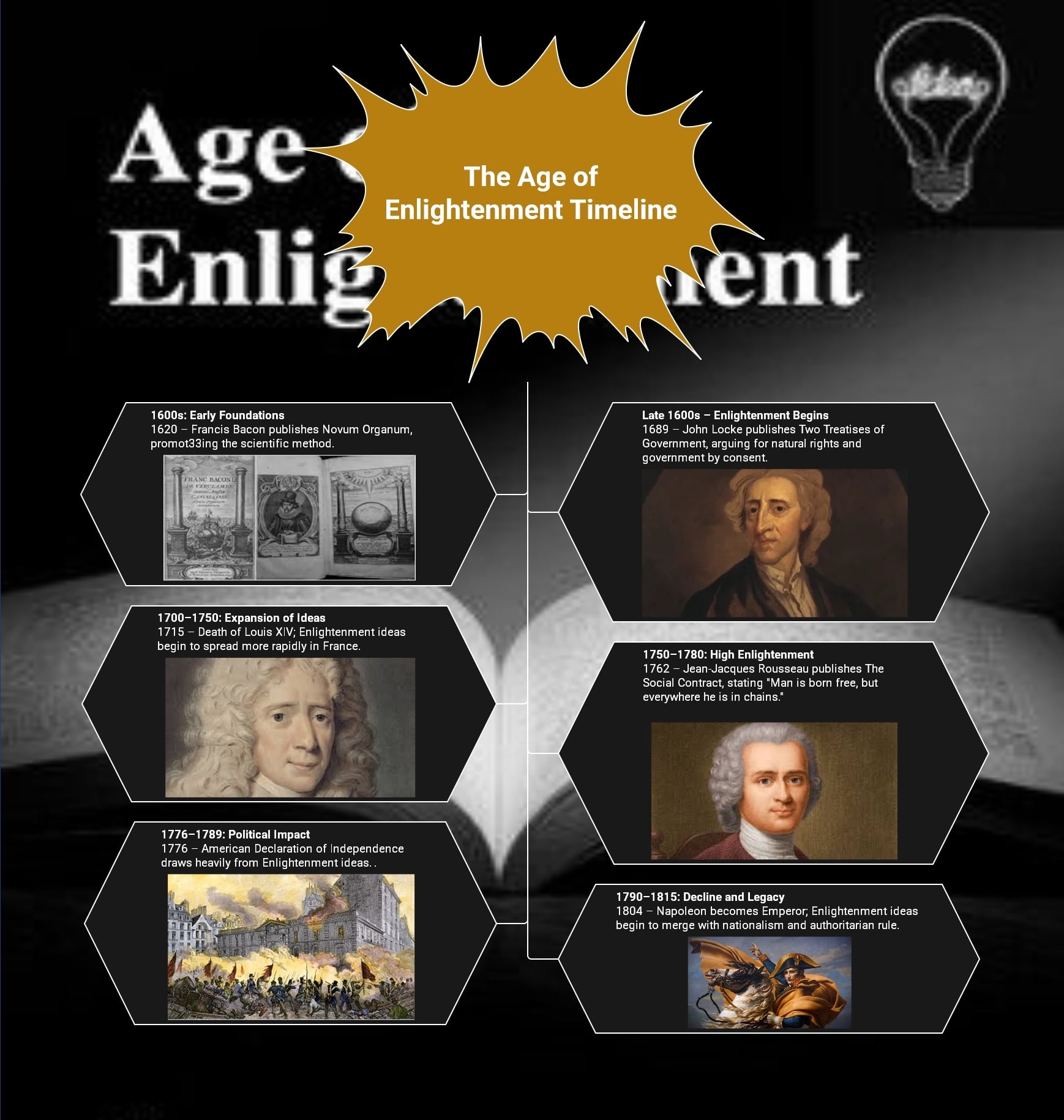The Age of Enlightenment is also known as the Age of Reason, was the era of intellectual and philosophical reasoning that emerged in Europe. There were significant advancements made in that era. Science emerged as a new way of life. Many philosophical leaders and researchers played a key role in promoting social reforms.
The rule of Napoleon, King Louis XIV, and others was also a part of the age of the Enlightenment. They have played their role in shaping the societies around Europe.
In this guide, we are going to discuss the timeline of the Age of Enlightenment. The key events and inventions alongside the early foundations. We will also find out how to make such timelines. Let’s get started!
In this article
Key Events & Timeline in the Age of Enlightenment
The Age of Enlightenment had different phases. Each phase is of great importance as different events and people worked to improve the knowledge for the good of the people.
The different phases have seen the ups and downs, whether they were due to the people, wars, or any other issues. Here are he different phases of the Age of Enlightenment. Let's check them out one by one.
Early Foundations
Willian Gilbert publishes the De Magnete. It is considered one of the first major works on experimental science in the early 1600s. Novum Organum was one of the most important publications by Francis Bacon. It paved the way to scientific methods, including observation and experimentation.
Meditations on First Philosophy by Descartes was another great publication that supported logical reasoning as a path to knowledge. The logical reasoning and discussions were a part of every scientific problem.
Beginning of the Enlightenment (Late 1600s)
The late 17th century had a lot to offer. The works of Sir Issac Newton for the laws of motion and universal gravitation. He also paved the way for the younger generations to think differently and understand the phenomenon of nature.
Two Treatises of Government by John Locke played a crucial role in discussing the natural rights and expanding the political views towards government. In the beginning, the knowledge the publications were focused on the human rights and welfare of the societies. The publication paved the way for people to fight for their rights.
Expansion of Ideas (1700-1750)
The early 18th century saw the deaths of Louise XIV and John Locke. Montesquieu's work on Persian Letters has described the phenomenon of power separation. Voltaire Publishes Letters on the English, celebrating the freedom of speech, the self-right of the people, and religious liberty.
The concept of Salons and coffee shops emerged in the 18th century. The salons were held by women mostly, and coffee shops were used to talk about politics, where people from different classes met and had their talks.
High Enlightenment (1750-1780)
Rousseau publishes the Social Contract, in which he talks about the realities of society. He also released the Emile, which focused on child education and their laws.
Adam Smith published The Wealth of Nations, which created a path for economists to learn new things. In this High Enlightenment, the knowledge started dot expand to American colonies as well. Voices over the religious, educational, and political rights started to emerge during this period.
Political Impact (1776-1789)
The American Declaration of Independence was written by Thomas Jefferson. This has described ideas of the rights of the people to overthrow the ridiculous power of the government.
The French Revolution also started during this era, and many other significant events occurred. The US Constitution was also drafted, and three branches were established, including the executive, legislative, and judicial branches.
Deline of Legacy (1790-1815)
The French Revolution and the Death of the Loise XVI were a few of the key moments. The death of Louise XVI ended the monarchy. The Reign of Terror killed thousands of people in the name of liberty. The phase was the toughest.
Napoleon, on the other hand, preserved the Enlightenment reforms and spread them through conquest. The Napoleonic wars ended in desperation for millions of people across Europe and created a sense of murdering the social and liberal rights of the people.
How to Make Such a Timeline
Timelines are made to know the past histories and investments for a particular event. A few of them are made to know the power transitions over time, and a few are for the battles and fights to embrace independence. There are a lot of use case scenarios. Whatever the reason you might have, you can make timelines.
EdrawMind is one of the best mind-mapping and timeline makers used to make attractive timelines. It has plenty of features, including different layouts, themes, and color combinations to nourish your designs. Here are a few of the most prominent features of EdrawMind.
Key Features
- Secure and Intuitive Interface: The interface of EdrawMind is quite user-friendly and helps you while designing anything.
- Multi-Format Mind Mapping: EdrawMind creates mind maps, radial maps, tree charts, fishbone diagrams, and timelines.
- Templates and Multiple Themes: EdrawMind offers thousands of templates and stylish themes to jump-start your creativity. You can use these templates to make your work easier.
- AI Tools: EdrawMind offers AI MindMap and design options that help users right away to produce profitable results in minutes.
- Themes and layout Options for Designs and Timelines: Themes, layouts, and color combinations in EdrawMind are quite important and make your timeline look better. The theme options change colors and designs to see a completely different look.
- Multiple Export Options: EdrawMind offers multiple file formats that you can use while exporting your timelines and other designs, including JPG, PDF, and SVG.
Step-by-Step Guide to Creating Timelines
Making a timeline is even easier when you specifically follow a guide. Here we have created a guide for you to follow. So, download and install EdrawMind and follow the given steps below.
Step 1Open the tool and click Create
- Open EdrawMind and click Create in the leftmost corner of the screen.
- You can use the New MindMap to access the same page as well.
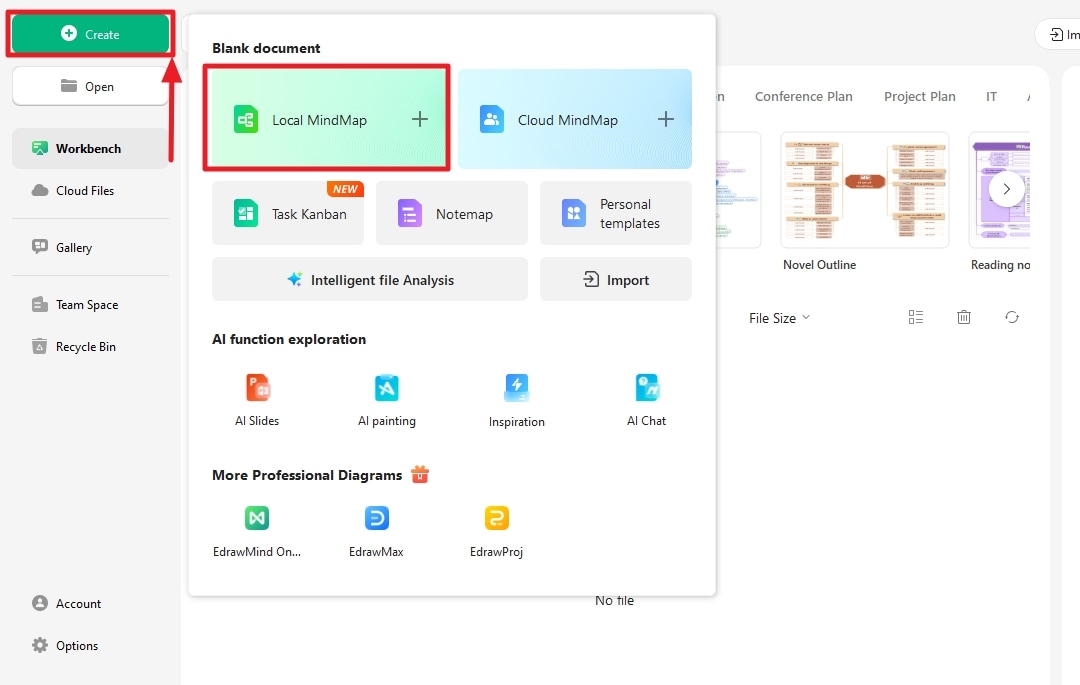
Step 2Edit the Given Template and add Images
A small template will open where you are going to find the Main idea alongside other elements.
- Edit the given template and put your ideas in it.
- Expand the given template using the tool.
- Add photos and other texts needed to make your timeline understandable.
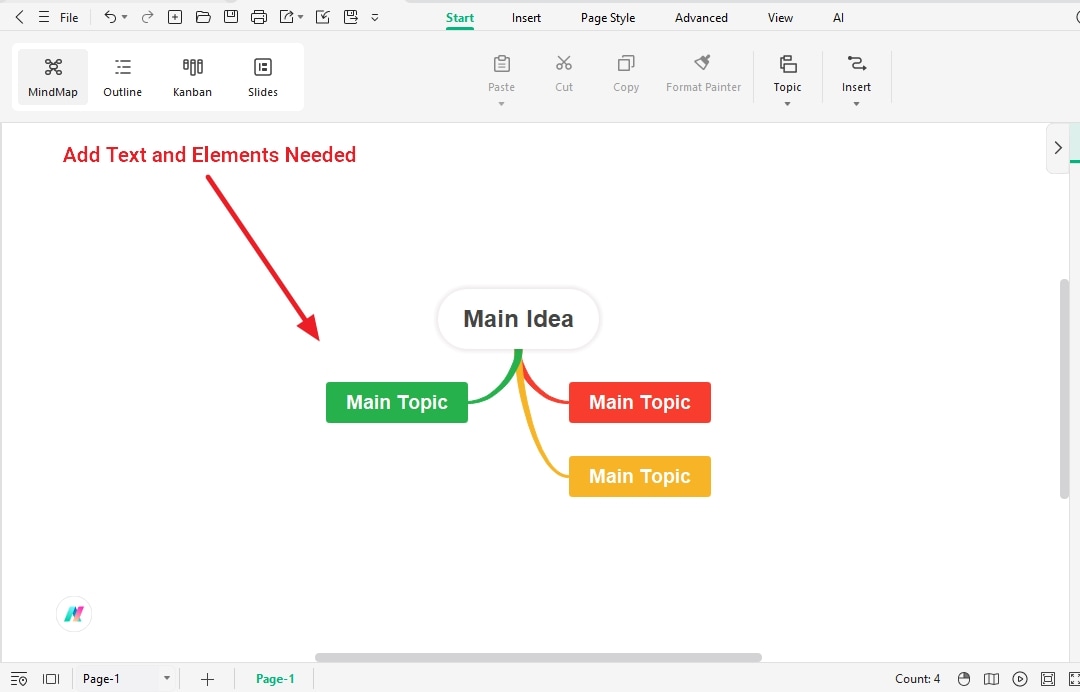
Step 3Change Themes and Layouts
Now, it's time to change the layout and themes for your timeline.
- Check the left-hand side toolbar to find the layouts and different themes.
- Pick the themes of your liking and apply them to your design.
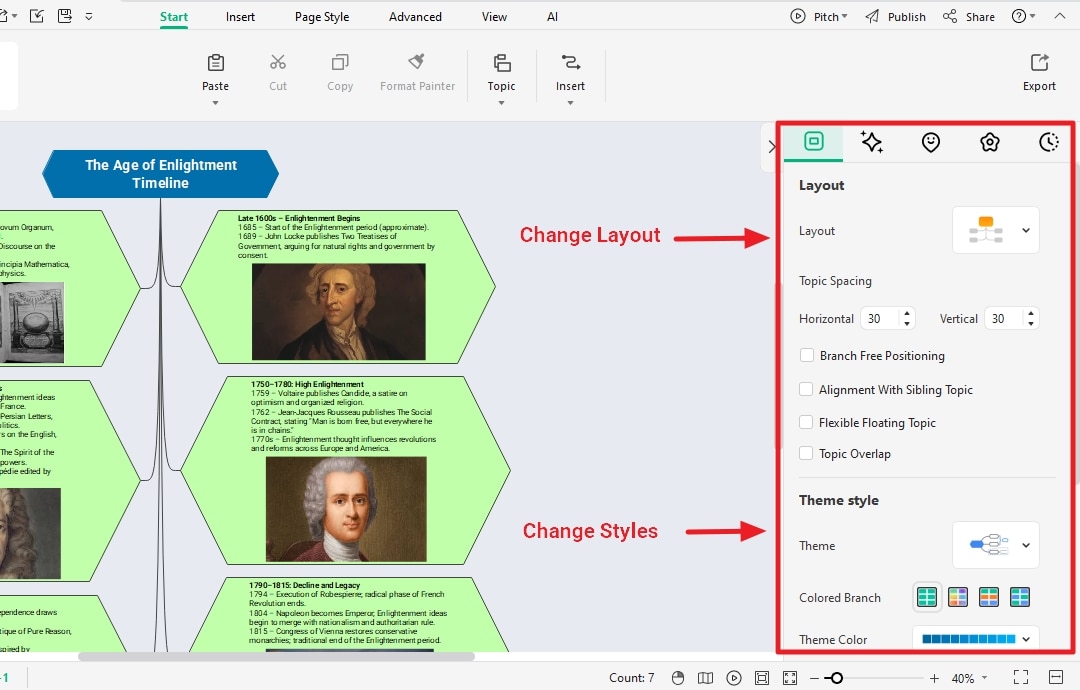
Step 4Save your Timeline
You can now export the timeline you have finalized.
- Click the export button on the top left-hand side of the screen and choose the file format to save it.
- You can also save the source file to make any adjustments later.
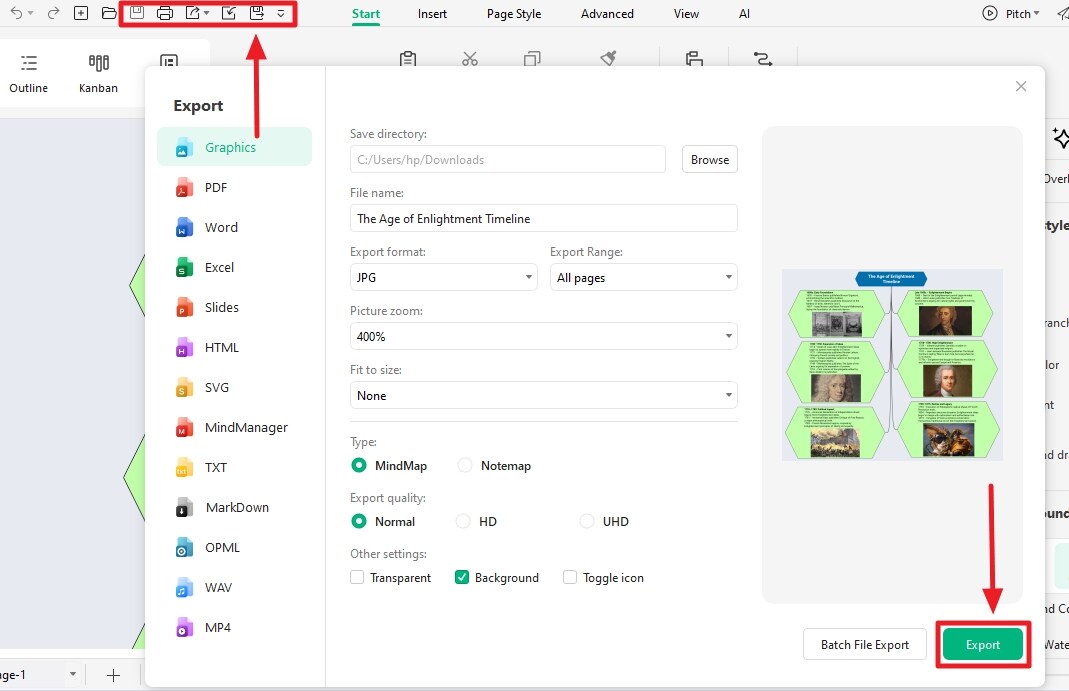
Final Words
Timelines are used to preserve the history of important past events. The Age of Enlightenment is one of the perfect examples of that. It revives history and lets us know the great works by historians, philosophers, and other scientists. EdrawMind helps us make such designs and timelines to remember and appreciate those works.
So, start creating a timeline through EdrawMind and convert your ideas into perfect designs. EdrawMind is going to help you through the process by providing the tools you need to make it perfect.



